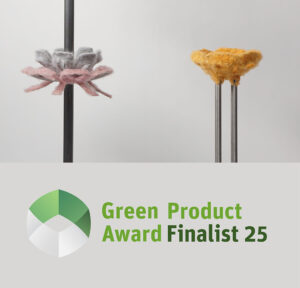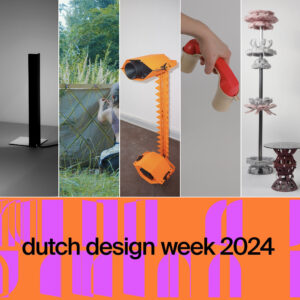
HIT THE WHEELS | Bachelorarbeit 2024
Müll entsteht immer dort wo Menschen leben. Wir sehen ihn aber nicht als wertvolle Ressource, deswegen muss ein Umdenken stattfinden. Ich bin mit der Motivation in diese Arbeit gegangen, ein möglichst klimafreundliches und umweltschonendes Produkt zu entwerfen. Das oberste Ziel war es nicht noch mehr Müll zu produzieren, möglichst wenig neue Materialien zu verwenden und auf chemische Produkte zu verzichten.
Am Anfang stand die Frage, mit welcher Art von Müll ich mich beschäftige. Ich habe mich für Radkappen entschieden, die auf Grünstreifen und neben der Straße zu finden sind.
Sie bestehen entweder aus dem Kunststoff Polyamid (PA) oder aus Polypropylen (PP), welches jeweils als Monomaterial vorliegt. Zusätzlich sind Drähte zur Stabilisierung angebracht. Der erste Schritt bei der Verarbeitung der Radkappen ist das Säubern. Ruß muss abgewaschen und die Plastikverstrebungen weggestemmt werden, so dass der Kunststoffkorpus vorliegt.
Die Kunststoffe der Radkappen sind thermoplastisch, das heißt, dass sie unter Hitze verformbar sind und nach dem Erstarren die Form beibehalten. Um dieses Ausgangsmaterial in eine neue Verwendung zu überführen, habe ich verschiedene Bearbeitungsmethoden ausprobiert. Mit einer Bandsäge werden die Radkappen eingeschnitten, die Oberfläche lässt sich mit der Sandstrahlmaschine glätten, die scharfen Kanten können mit einem Multimaster und verschiedenen Körnungen geschliffen werden. Das Erhitzen mit einem Heizstrahler lässt eine starke Biegung des Korpus zu. Mehrere Radkappen werden mit den bereits vorhandenen Drähten und neuen Drahtseilklemmen verbunden, so dass auch das Gewicht der Radkappenkonstruktion in eine notwendige Stabilität gebracht werden kann.
Nach umfangreichen Bearbeitungsmethoden und Experimenten, fügt sich nun der Prozess der Entwurfsarbeit an. Runde Formen wie Scheiben, Kugeln, Ringe bestimmen den Prozess der Formgebung. Dabei kristallisieren sich Formen, die an Schalen und Schüsseln erinnern heraus. Die besondere Art und Weise des kreativen Designprozesses liegt bei dem Upcycling-Entwurf tatsächlich in der Beschäftigung mit dem Material. Wenig zweidimensionale Entwurfsskizzen, vielmehr die Aneinanderreihung von dreidimensionalen Prototypen und Grundkonstruktionen bestimmen die Kreation der Produkte. Die Form kommt aus dem Material und den Bearbeitungsprozessen, die Funktion entwickelt sich erst als letzte Komponente. Es entstehen Schalen, Kleinmöbel, Skulpturen und Kunstobjekte. Damit wird eine erneute Wertschöpfung erreicht, die Radkappe startet einen neuen Lebenszyklus.
Danach folgt die Frage der Oberflächenbehandlung. Die graue Oberfläche der Radkappen ist durch die Abnutzung im Straßenverkehr zerkratzt und unansehnlich. Mit natürlicher Färbung können Außen- und Innenseiten veredelt werden. Dabei wird ein Sud aus Krappwurzel und Blauholz gekocht und die Objekte eingetaucht beziehungsweise eingedämpft. Damit erfolgt eine Rot-Lila- beziehungsweise eine Blaufärbung der Oberfläche. Eine weitere Veredlung wurde über eine Blattgold-Auflage erreicht. Die dritte Möglichkeit liegt in der Beklebung mit Lyocellfasern, die industriell aus Holz hergestellt werden. Bei diesem Herstellungsprozess werden 99 % der verwendeten Lösungsmittel, die nicht giftig sind, im Kreislauf gehalten. Der Klebstoff und die Lyocellfasern sind biologisch abbaubar.
Die Beschäftigung mit dem Thema Müll kann einen auf jeden Fall an seine Grenzen bringen. Bei dem riesigen Abfallaufkommen, egal ob im Meer oder auf dem Land, scheint eine Besserung nicht in Sicht zu sein. Trotzdem sollte man für eine Verbesserung kämpfen. Form follows function war gestern, heute heißt es form follows Müll.
Waste is always produced where people live. But we don’t see it as a valuable resource, so a rethink is needed. I went into this work with the motivation to design a product that is as climate-friendly and environmentally friendly as possible. The primary goal was not to produce any more waste, to use as few new materials as possible and to avoid chemical products.
At the beginning there was the question of what kind of waste I should deal with. I decided on hubcaps that can be found on grass verges and beside the road.
They are made of either polyamide (PA) or polypropylene (PP), both of which are monomaterials. Wires are also attached for stabilization. The first step in processing the hubcaps is to clean them. Soot must be washed off and the plastic struts removed so that the plastic body is available.
The plastic of the hubcaps is thermoplastic, which means that it can be formed under heat and retains its shape after solidification. I tried out various processing methods to transfer this raw material to a new use. The hubcaps are cut with a band saw, the surface can be smoothed with a sandblasting machine and the sharp edges can be sanded with a multimaster and various grit sizes. Heating with a radiant heater allows the body to be strongly bent. Several hubcaps are connected with the existing wires and new wire rope clamps so that the weight of the hubcap construction can also be given the necessary stability.
After extensive processing methods and experiments, the design process now begins. Round shapes such as disks, spheres and rings determine the shaping process. Shapes reminiscent of bowls and dishes crystallize in the process. The special nature of the creative design process in the upcycling design actually lies in the engagement with the material. The creation of the products is determined less by two-dimensional design sketches and more by a series of three-dimensional prototypes and basic constructions. The form comes from the material and the machining processes, the function only develops as the final component. Bowls, small pieces of furniture, sculptures and art objects are created. This creates new added value, the hubcap starts a new life cycle.
This is followed by the question of surface treatment. The gray surface of the hubcaps is scratched and unsightly due to the wear and tear of road traffic. Natural coloring can be used to refine the outer and inner surfaces. This involves boiling a decoction of madder root and bluewood and dipping or steaming the objects. This results in a red-purple or blue coloration of the surface. Further refinement was achieved by applying a layer of gold leaf. The third option is to cover the surface with lyocell fibers, which are industrially produced from wood. In this manufacturing process, 99% of the solvents used, which are non-toxic, are kept in circulation. The adhesive and the lyocell fibers are biodegradable.
Dealing with the issue of waste can definitely push you to your limits. With the huge amount of waste, whether in the sea or on land, there seems to be no improvement in sight. Nevertheless, we should fight for an improvement. Form follows function was yesterday, today it’s form follows waste.
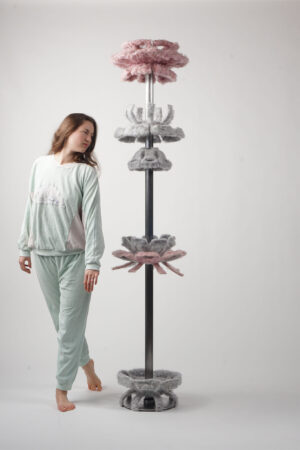
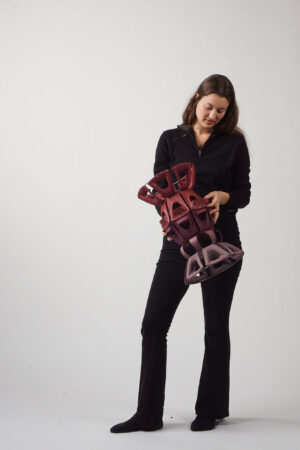

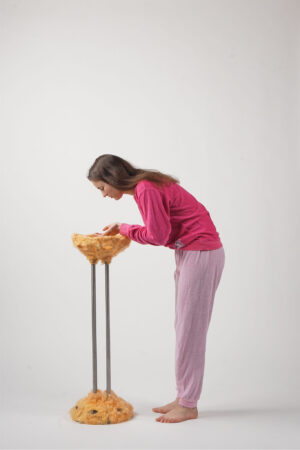
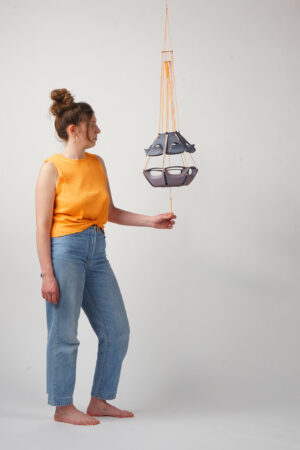
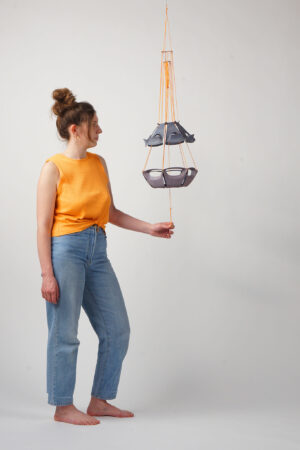
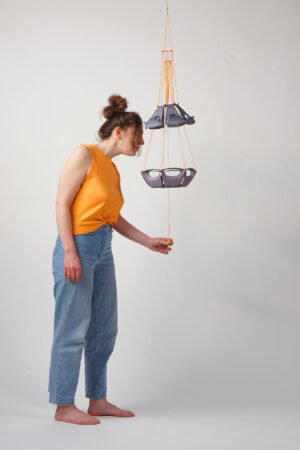
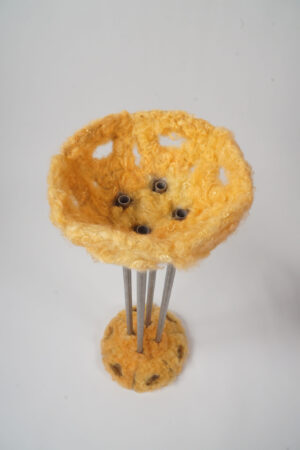

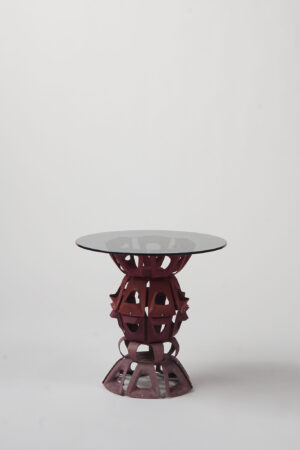
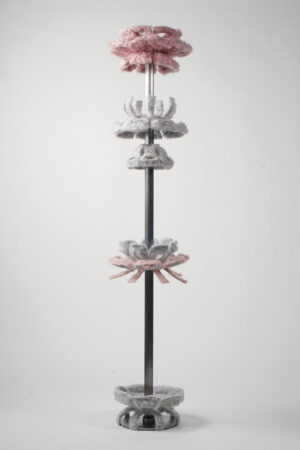
Prozess
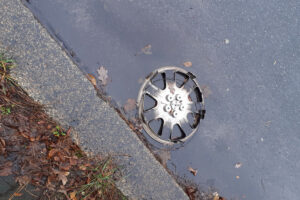
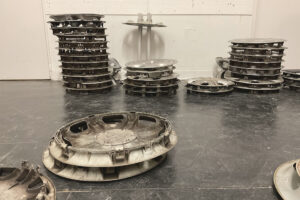
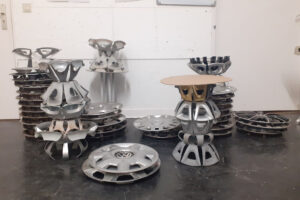
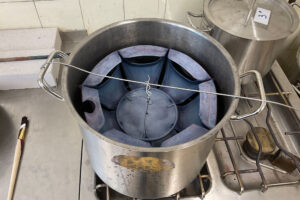
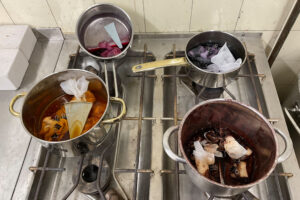

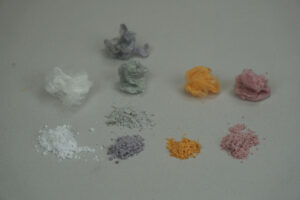
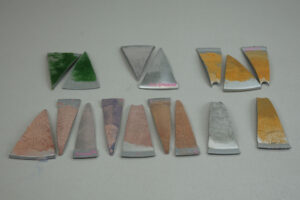
Betreut durch: Prof. Axel Kufus, Pro. Holger Neumann, KM Anja Lapatsch

